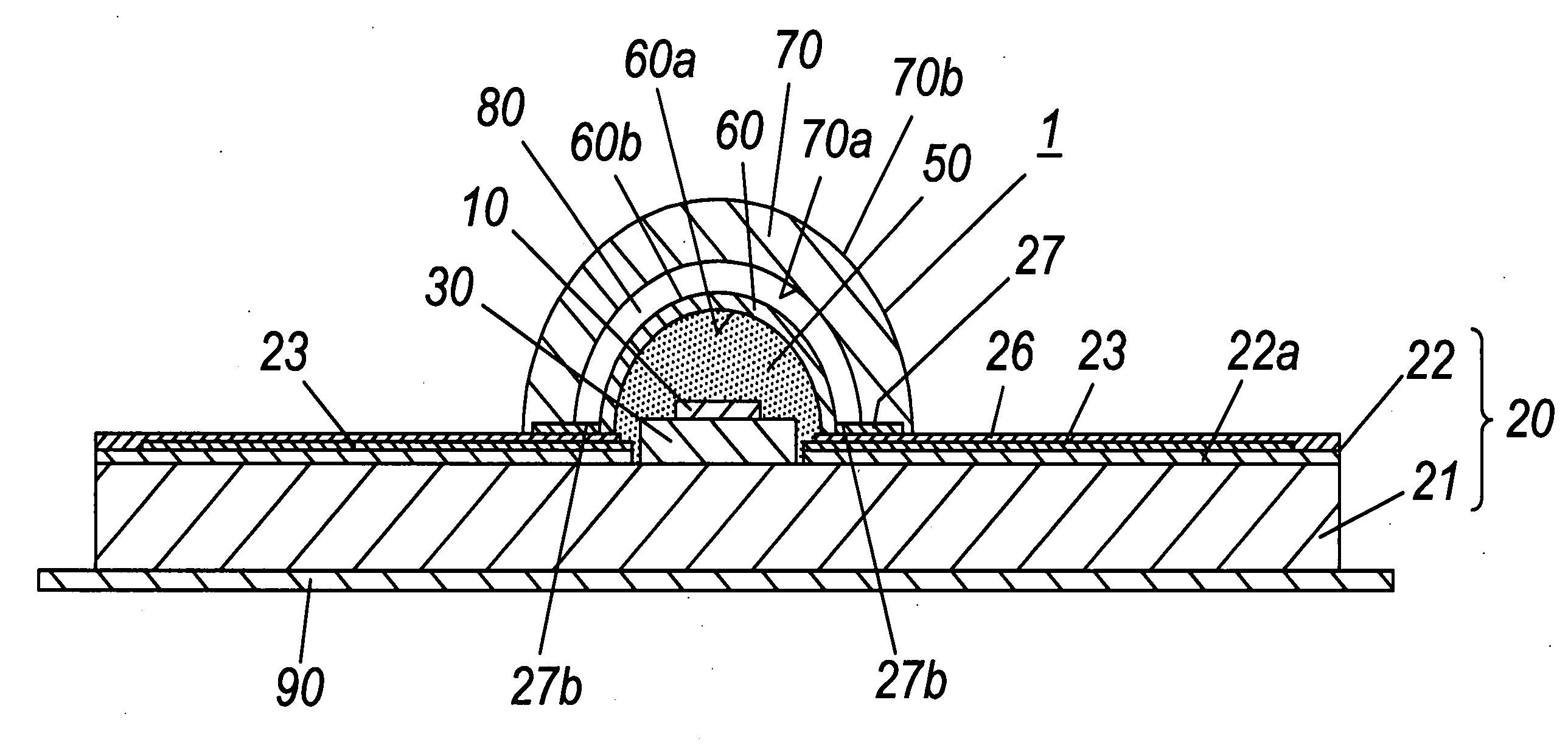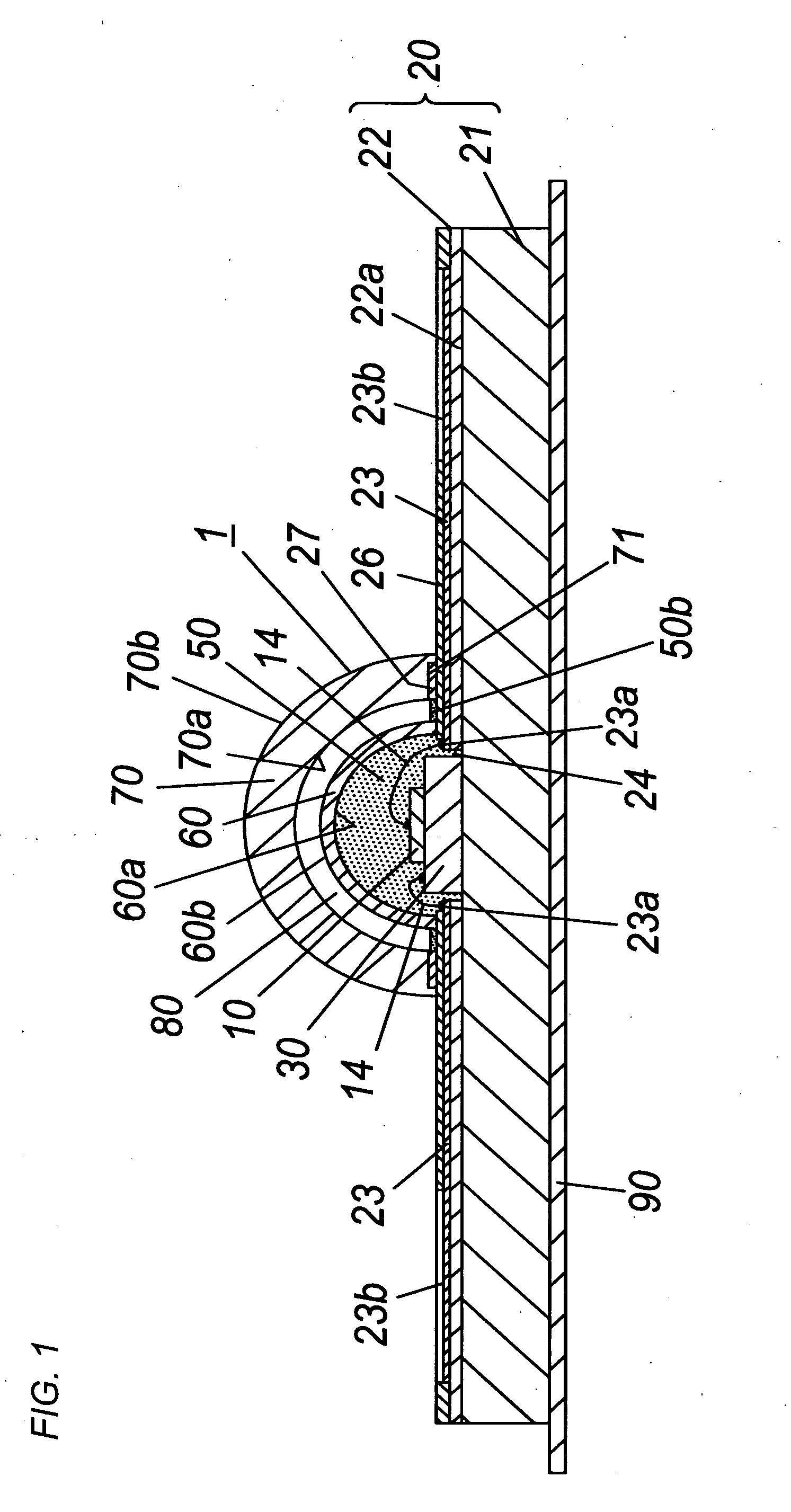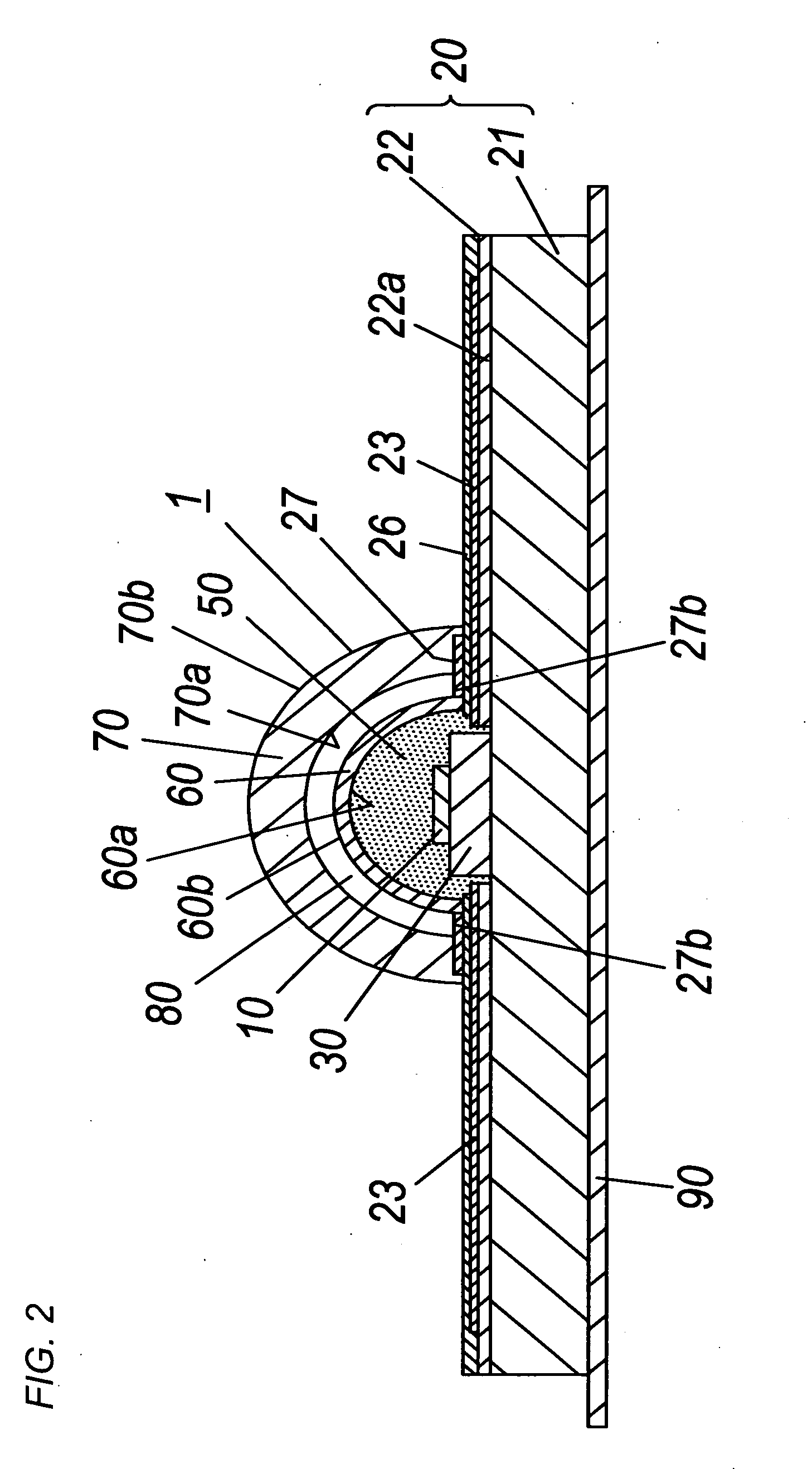Method of mounting LED chip
a technology of led chips and mounting parts, which is applied in the direction of light and heating equipment, semiconductor devices for light sources, solid-state devices, etc., can solve the problems of excessive thermal resistance of luminaires, limited light output, and residues on mounting parts, so as to prevent excessive extension of eutectic bonds, improve the uniformity of metal layers, and suppress the generation of voids inside metal layers
- Summary
- Abstract
- Description
- Claims
- Application Information
AI Technical Summary
Benefits of technology
Problems solved by technology
Method used
Image
Examples
Embodiment Construction
[0021]Hereafter, explanations are given as to a light emitting device in an embodiment, with reference to FIGS. 1 to 8.
[0022]As shown in FIGS. 1 and 2, the light emitting device 1 in this embodiment comprises an LED chip 10, a mounting substrate 20 shaped into a rectangular plate which holds the LED chip 10, a′dome-shaped optical member 60 made of a light-transmissive material, a light-transmissive elastic encapsulation resin 50, and a dome-shaped color conversion member 70. The mounting substrate 20 is provided at its top surface with a ring gate 27. The ring gate 27 is formed outside of the optical member 60 to protrude from the top surface of the mounting substrate. The mounting substrate 20 is provided at its top surface with the LED chip 10 and a patterned conductor 23 which supplies electric power to the LED chip 10. The encapsulation resin 50 is filled in a space confined between the optical member 60 and the mounting substrate 20 for encapsulating therewith the LED chip 10 a...
PUM
| Property | Measurement | Unit |
|---|---|---|
| temperature | aaaaa | aaaaa |
| thicknesses | aaaaa | aaaaa |
| thicknesses | aaaaa | aaaaa |
Abstract
Description
Claims
Application Information
 Login to View More
Login to View More - R&D
- Intellectual Property
- Life Sciences
- Materials
- Tech Scout
- Unparalleled Data Quality
- Higher Quality Content
- 60% Fewer Hallucinations
Browse by: Latest US Patents, China's latest patents, Technical Efficacy Thesaurus, Application Domain, Technology Topic, Popular Technical Reports.
© 2025 PatSnap. All rights reserved.Legal|Privacy policy|Modern Slavery Act Transparency Statement|Sitemap|About US| Contact US: help@patsnap.com



